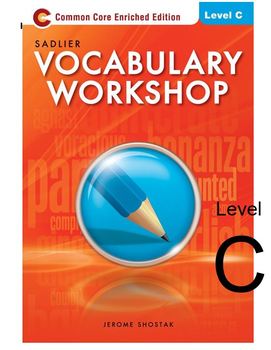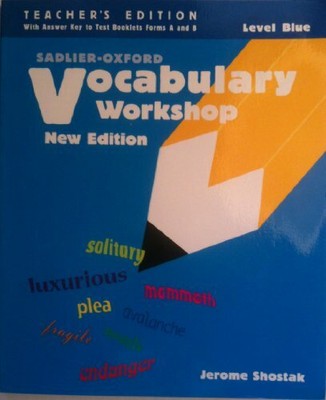

A final mastery test, however, is included in the Student Book (with answers in the TE). In Grades 6-12+, the test booklets are optional and since we are unable to get the answer keys, we don’t sell them. These include unit tests as well as a mid-year and final test with answers in the Teacher Edition. In Grades 1-5, there are Test Booklets in two forms (A & B) with perforated pages available as separate purchases. Course structure in the two levels is essentially the same with the grade-appropriate differences you would expect. There are also flashcards, games, and practice quizzes for additional reinforcement (and fun!).Īvailable for grades 1 through 12+, there are a few differences between the elementary levels (grades 1-5) and the upper levels. Here the student can listen to the introductory passage as well as each word distinctly pronounced. Often, sample sentences used in the lessons will be taken directly from these classic literature selections.Įasy to access and navigate Online Resources parallel each unit. For every course there are literature suggestions for additional reading.

#VOCAB WORKSHOP BOOK PLUS#
Teacher Books include all student pages (with answers) plus overview information on the course, planning/pacing guides, ELL support, and teaching strategies for each segment of the units. The Student Booksare consumable with an accent color and include instructional material as well as all exercises. Writing prompts using vocab words are integrated at grade-appropriate levels in all the courses. After every three units there is a review lesson that has additional practice exercises in classifying (choosing a word that goes with a group of words), completing the idea, and vocabulary for comprehension (an exercise that involves reading a passage that includes many of the review words and then answering reading comprehension questions).
#VOCAB WORKSHOP BOOK SERIES#
Shades of meaning can be one of the biggest challenges in learning new words and this series addresses idioms, proverbs, similes, metaphors, denotation and connotation, and others. Additional practice exercises in each unit include choosing the right word, matching the meaning, word studies (prefixes, suffixes, roots), synonyms, and antonyms. Students participate in preparing dictionary type of entries for each word by completing sample sentences. These excerpts are taken from a broad range of grade-appropriate written material: magazine articles, myths, fiction, biography, textbooks, and reports. Words for each unit are introduced through the reading of (and/or listening to) a literary passage.

Vocabulary-building strategies as well as writing exercises, and word relationships/meanings are all incorporated. The instructional approach is rooted in contextual learning coupled with systematic instruction and practice exercises that provide multiple exposures to the words. A multi-faceted and robust program, Vocabulary Workshop is also easy to use and incorporates online resources. Because students learn most word meanings indirectly, or from context, it is important that they learn to use context clues effectively. Context clues include definitions, restatements, examples, or descriptions. Ĭontext clues are hints about the meaning of an unknown word that are provided in the words, phrases, and sentences that surround the word. For example, if students learn just the four most common prefixes in English (un-, re-, in-, dis-), they will have important clues about the meaning of about two thirds of all English words that have prefixes.

Knowing some common prefixes and suffixes (affixes), base words, and root words can help students learn the meanings of many new words. The most helpful dictionaries include sentences providing clear examples of word meanings in context.
#VOCAB WORKSHOP BOOK HOW TO#
Students must learn how to use dictionaries, glossaries, and thesauruses to help broaden and deepen their knowledge of words, even though these resources can be difficult to use. Using dictionaries and other reference aids how to use context clues to determine word meanings.how to use information about word parts to figure out the meanings of words in text and.how to use dictionaries and other reference aids to learn word meanings and to deepen knowledge of word meanings.They need to develop effective word-learning strategies. Therefore, students also need to be able to determine the meaning of words that are new to them but not taught directly to them. Of course, it is not possible for teachers to provide specific instruction for all the words their students do not know.


 0 kommentar(er)
0 kommentar(er)
